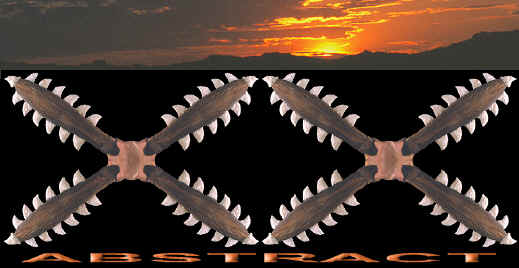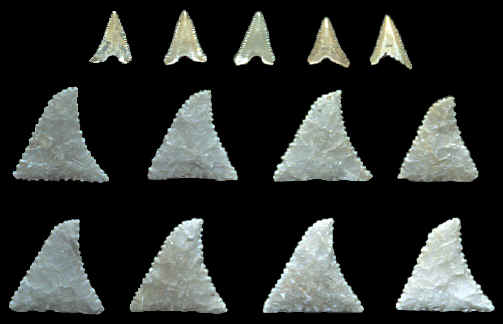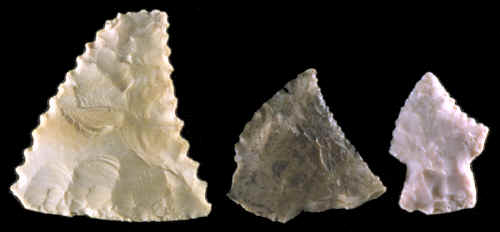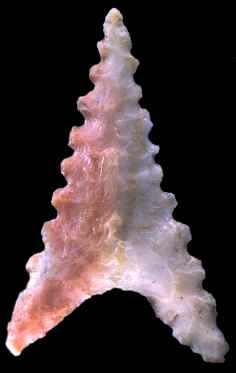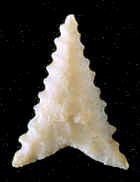|
||
|
||
|
"In
enlarging the excavation (at Cahokia), a wooden object was found which seemed to be
sort of a club. On removal of the wood, five
shark teeth were found with
eight flint blade----."---195-,
Greg Perino, "Cahokia Brought to Life," page 66 & 67. |
||
|
||
|
SHARK TEETH The Cahokia Mounds State Historic site is located in Madison and St. Clair Counties in southern Illinois. The people who were living there, between 850 to 1400 A.D. were using a wide variety of raw materials. Some of these materials were traded in from long distances away. Items, like copper, mica and sea shells were transported hundreds of miles. Recording these non-local "exotic" materials has added a great deal of information to the archaeological record. They show how ancient cultures, within a region, interconnect with each other, through trade and various other ways. One of the rarest trade items found at Cahokia are teeth from a great white shark. |
||
|
Shark teeth have been
used by primitive cultures in many places around the world. Captain Cook
collected shark tooth weapons during his voyages in the Pacific. A group
of people called the Guaitac who once lived on the coast of northeastern
Brazil used arrows tipped with shark teeth. Another group called the
Teremembe who were located along the southeastern coast of Brazil used
spears tipped with shark teeth. The Cocle people of Panama made
necklaces out of shark teeth. |
||
|
||
|
Ancient cultures all over the world have used various kinds of animal teeth for thousands of years. It's a very durable raw material that may have been more desirable (and prestigious) to use in place of a chert blade or biface in some instances. Pacific Islanders were using shark teeth to make several different kinds of cutting tools and weapons. In fact, they were making wooden clubs with shark teeth inserted along the edges similar to the one Greg Perino found at Cahokia in 1948. Shark teeth are exceptional for their sharp edges and must have been a desirable trade item to people living far away from the coast line. |
||
|
||
|
The discovery of shark teeth on the Cahokia Mounds site is a testimony to the wide ranging area of trade that the people living there must have enjoyed. At least two or more different types of shark teeth have been discovered there. The most important discovery of shark teeth was made by Greg Perino on January 8, 1948 at mound 34. It was on this date that he found a wooden club that once held 5 shark teeth from a great white shark and eight chert points that were flaked into effigies of shark teeth. The wooden club was badly deteriorated as was the root tips of the shark teeth. In fact, it is believed that these shark teeth may have all been drilled like another example that was also excavated from this site. |
||
| CONTINUE ON TO PAGE TWO | ||
|
"REFERENCES"
1946,
Metraux, Alfred, "Handbook of South American Indians," "The
Guaitaca," Vol. 1, The Marginal Tribes, page 522. |
||

